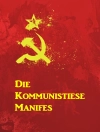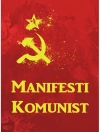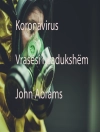Cross-coupling reactions involving C-H and C-X bond functionalisation are commonplace in natural product synthesis and natural products, therapeutic agents, biological probes, and advanced materials. Much attention has been given to understanding the mechanistic strategies used to achieve this, making this a hot topic in recent years. In this edited book, contributions from across the globe examine these strategies, with a particular focus on palladium and copper, as well as iron – an emerging element in this field. Reviewing the recent literature, the book presents an in-depth understanding of the field, guiding the reader to achieving the best synthetic strategies for aromatic functionalisation. Organic and Organometallic chemists, as well as natural product and pharmaceutical scientists, will find this an essential guide to a major transformation currently underway in synthetic chemistry.
İçerik tablosu
1. Cu-catalyzed Ullmann-type C-heteroatom bond formation: the key role of dinucleating ancillary ligands;
2. Mechanistic understanding of copper-catalyzed aryl-heteroatom bond formation: dependence on ancillary ligands;
3. Fundamental Pd(0)/Pd(II) redox steps in cross-coupling reactions;
4. Pd(II)/Pd(IV) redox catalysis for C-heteroatom bond formation;
5. Mononuclear and Dinuclear Organometallic Pd III complexes in C-C and C-heteroatom bond formation reactions;
6. Aromatic C-F activation: converting toxic substrates to useful synthons;
7. Strategies towards challenging aromatic fluorination and trifluoromethylation reactions;
8. Coordination-directed metallation strategy for C-H functionalization;
9. Transition-metal-catalyzed direct arylation of unactivated arenes with aryl Halides;
10. Double C-H activation in Pd-catalyzed cross-coupling reactions of non-preactivated arenes;
11. Palladium and copper-catalyzed oxidation of organic chemicals;
12. Strategies for metal-mediated direct arylation of nucleosides and amino acid derivatives
Yazar hakkında
Xavi Ribas is Professor Agregat of Inorganic Chemistry in the Chemistry Department of the Universitat de Girona since 2006. He graduated in Chemistry from the Universitat de Girona (1996) and in 2001 obtained Ph D in Chemistry by the Universitat de Girona. His main research interests are bioinorganic Models of Cu and Fe No-Heme Oxygenases, molecular Oxygen Activation and C-H and C-C Bond Activation. Chemistry of Cu(III).












